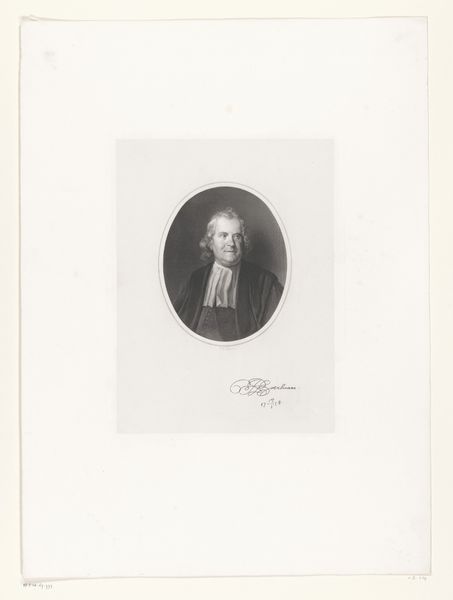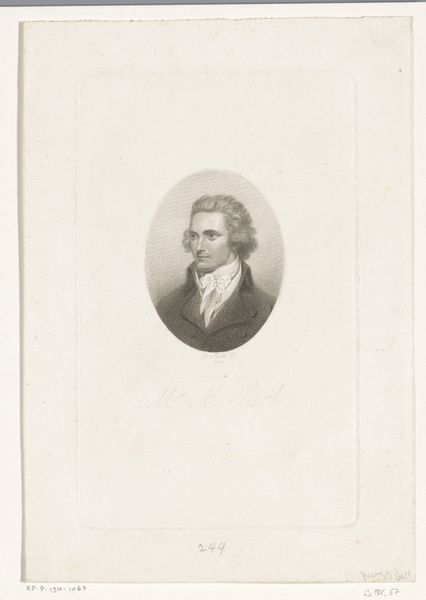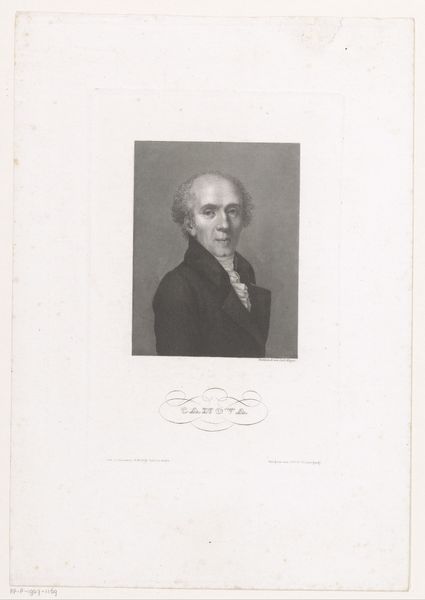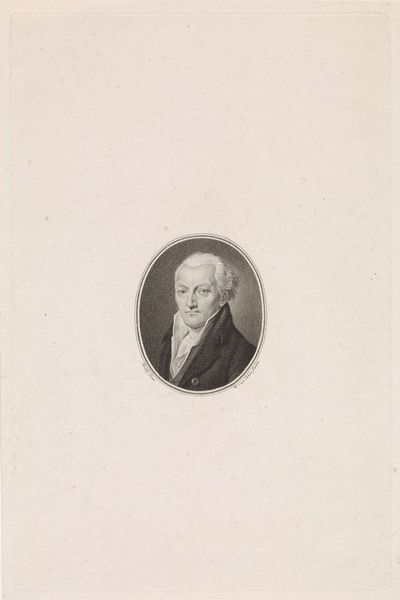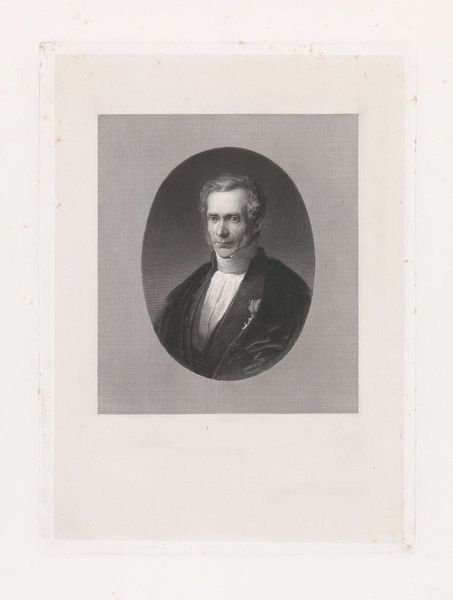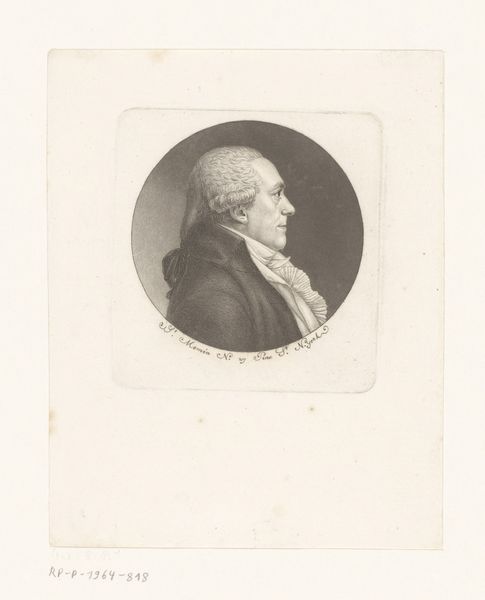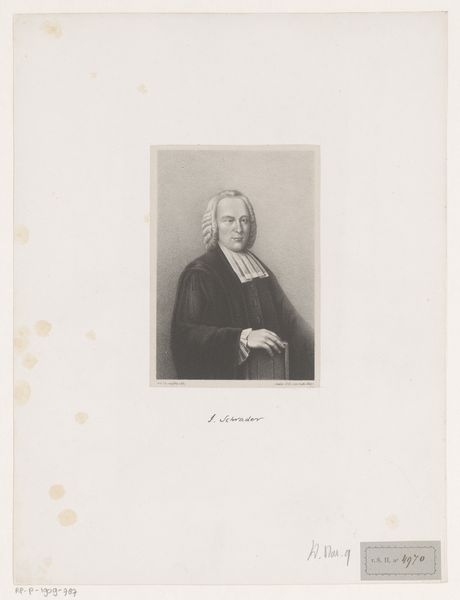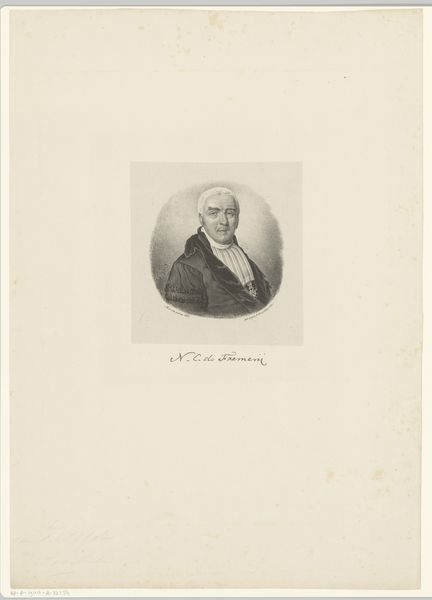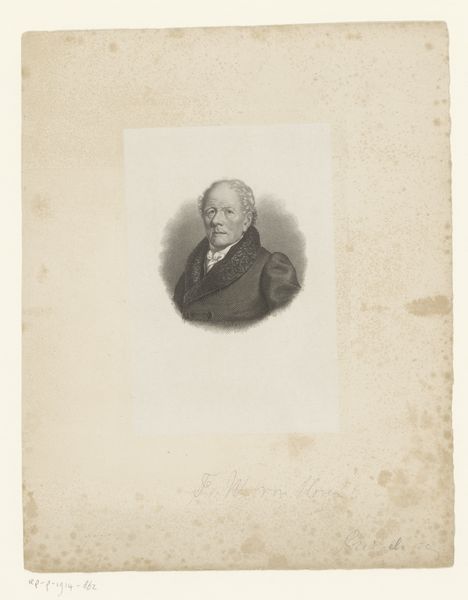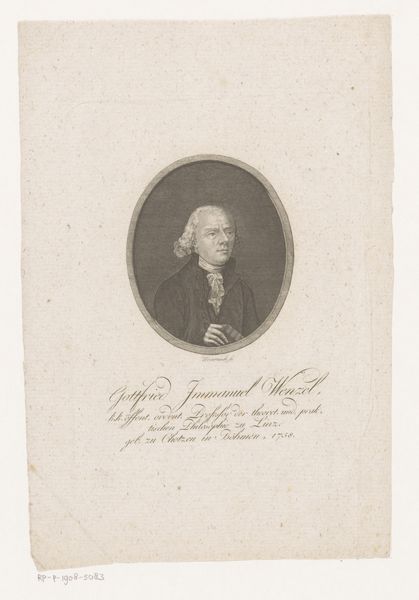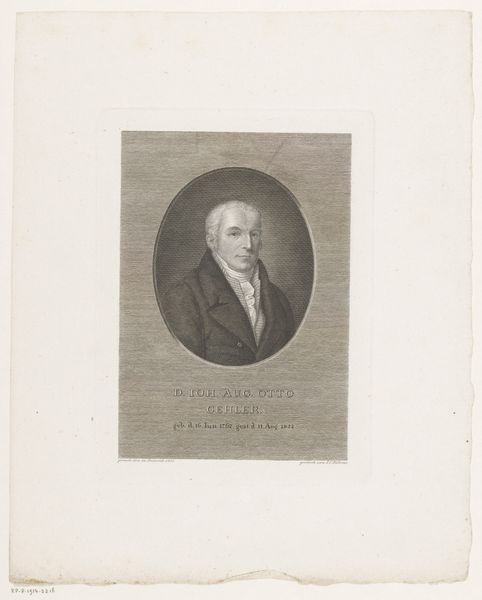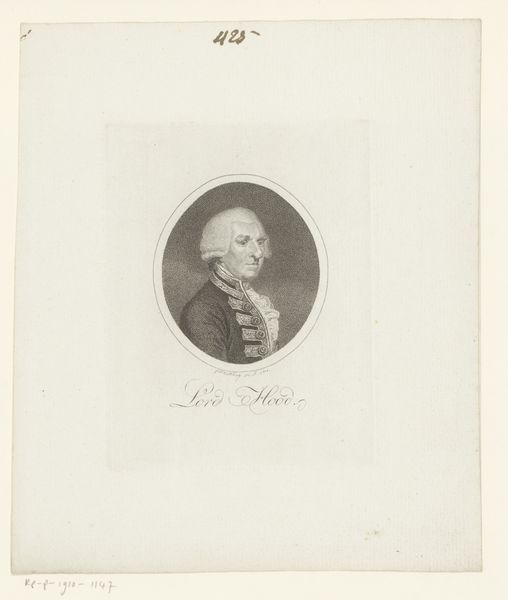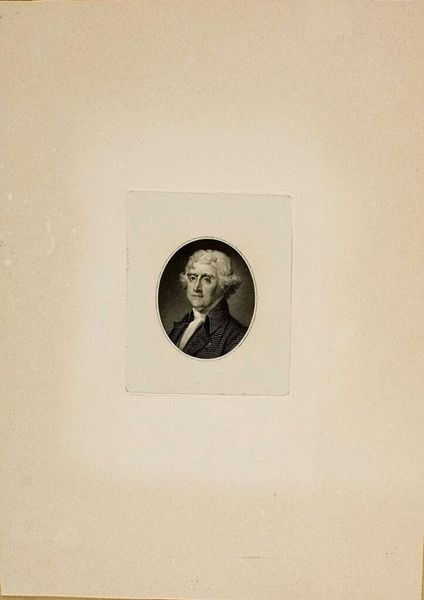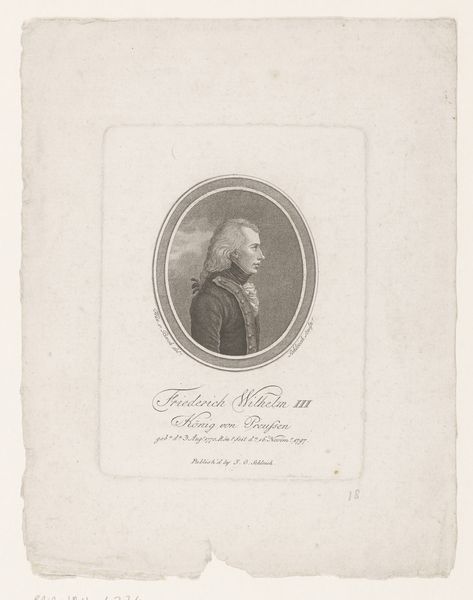
print, etching
#
portrait
#
pencil drawn
# print
#
etching
#
figuration
#
romanticism
#
genre-painting
#
history-painting
#
academic-art
#
realism
Dimensions: height 290 mm, width 205 mm
Copyright: Rijks Museum: Open Domain
Curator: This etching presents a portrait of the theologian Herman Johan Royaards, dating from around 1834 to 1859. Editor: My initial impression is one of formality, perhaps even austerity. The oval format and monochrome palette reinforce this feeling. The texture appears subtle, not overly worked. Curator: Indeed, the limited tonal range, achieved through the etching process, creates a somewhat restrained atmosphere. The portrait's composition centers the subject within the oval, directing focus toward his features and academic garb. What semiotic elements do you observe that underscore his status? Editor: The collar, the gown, the subtle medal, it all speaks of a learned man, a professional. The production of such a portrait would be considered quite skillful for the period. Curator: Absolutely, there's a clarity in the etching style, capturing both realism and idealization. Consider how the interplay between light and shadow defines Royaards' face, lending him a noble and slightly aloof presence. It mirrors academic art's conventions. Editor: When looking at this, I also wonder about the availability and use of printed portraiture, not just for personal mementos but to amplify and democratize this type of professional presence at this time. The social function is quite powerful. Curator: A fascinating angle to consider, its relation to print culture in early 19th-century Dutch society. But look closely at the execution. Editor: Agreed. This wasn't merely an act of representation. The labor invested in the etching plate suggests an intentional elevation. One must also examine the quality and availability of etching tools and papers to truly understand the conditions under which this piece came into existence. Curator: Indeed, understanding the materiality sheds light on the value imbued to the subject, theologian Royaards. Ultimately, it gives the composition a deeper contextual resonance. Editor: Examining the materials provides just another facet to interpret social narratives. It reframes how we see not just the subject, but the value of knowledge at the time.
Comments
No comments
Be the first to comment and join the conversation on the ultimate creative platform.
